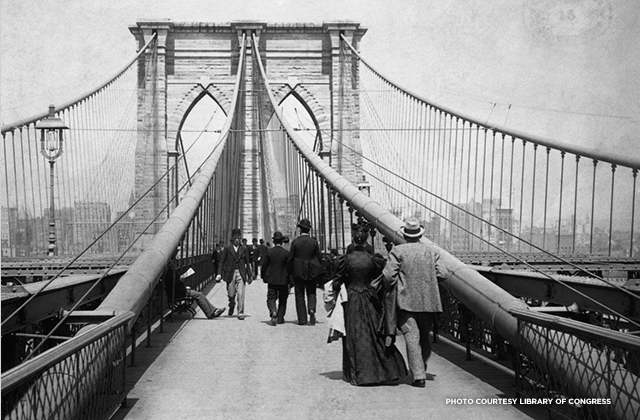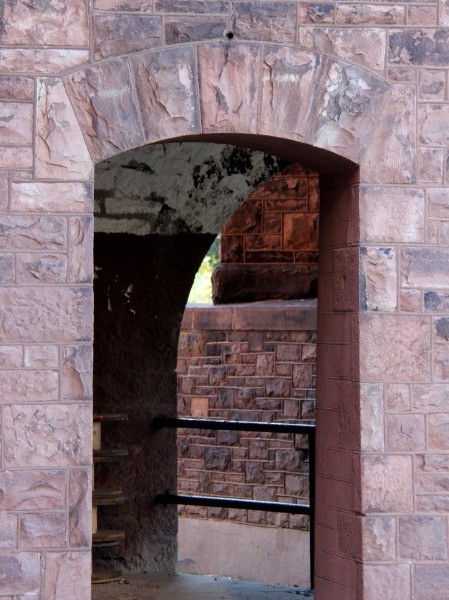The
Distinctive Sandstone of the Richardson Olmsted Campus
By Corey Fabian Borenstein Reprinted with permission from the Richardson Omsted Complex in 2017  Photo by Joe Cascio
The
Richardson Olmsted Campus is famous for its two towers
and castle-like exterior. Part of what makes the Richardsonís
exterior so distinctive is the red
Medina sandstone chosen by architect Henry
Hobson
Richardson.  Medina sandstone on the Brooklyn Bridge, 1894 Photo Courtesy of the Library of Congress The
Richardson Olmsted Campus, built in the 1870s, used
reddish-brown Medina sandstone quarried from Hulburton in
Orleans County, New York.The former Buffalo State Hospital was
conveniently sited just off Scajaquada Creek, making the
transportation of the heavy stone via the Erie Canal relatively
easy. With
its ragged, rough surface, the exterior of the building might
look like the builders didnít finish the stone,but this look was
actually intentional. The sandstone was purposefully carved in a
rusticated, or rough, style that added to the hospitalís
imposing stature. Architect H.H. Richardson would continue to
use this rusticated sandstone in future projects, including the
New York State Capitol.  The rough exterior of the Richardson. Photo courtesy of Sharon Cramer
The
overall effect of the building was made more dramatic by using a
reddish iron-oxide mortar, called pointing, between the
stone joints. Typically, white or grey pointing would be
inserted between the stones to create an indented effect.
Instead, the Richardson Olmsted Campus features unusual red
mortar pointing raised up between the stones,highlighting the
color and creating a distinctive pattern.  The original red pointing revealed in the new
North Entry.
Photo courtesy of Corey Fabian Borenstein In
the 145 years since construction, most of the red iron-oxide
mortar was replaced with grey pointing. However, during
construction of the Richardson's glass North Entry, original red
mortar was revealed hiding beneath a 1920s-era addition. Todayís
visitors can now see the original red mortar and feel the rough
Medina sandstone up-close inside the North Entry  The original red pointing was later replaced
by grey pointing.
Photo Courtesy of Tom Johnston In
2013, the Richardson Olmsted Campus was honored in the inaugural
class of the Medina Sandstone Hall of Fame for its extraordinary
faÁade. And year, with the opening of Hotel Henry and the Lipsey
Buffalo Architecture Center, visitors can marvel and enjoy these
magnificent sandstone structures anew. |